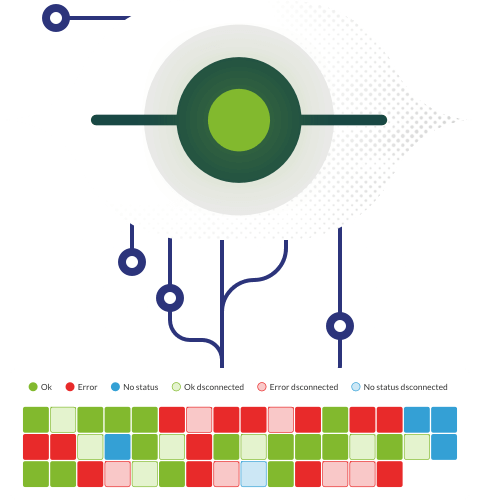You drink tap water every day, right? Do you know who invented the filtering mechanism that makes water pure and clean?… Well, do you actually care?
Do you know that this mechanism is exactly the same in all the taps of all the houses of any country? Do you know that this specialized piece is the work of an engineer who does it just because? Can you imagine what could happen if this person had a bad day?
Let’s talk about the XZ Utils library and why it is not a good idea to depend on a single supplier and make them angry. Let’s talk about the XZ Utils library and its latest developer, Jia Tan.
Yes, open source software can offer a series of benefits in terms of prices (because it is actually “free”), transparency, collaboration and adaptability, but it also entails risks regarding the security and excessive trust that we place as users.
What happened?
On March 29, Red Hat, Inc. disclosed the vulnerability CVE-2024-3094, with a score of 10 on the Common Vulnerability Scoring System scale, and, therefore, a critical vulnerability, which compromised the affected SSH servers.
This vulnerability affected the XZ Utils package, which is a set of software tools that provide file compression and decompression using the LZMA/LZMA2 algorithm, and is included in major Linux distributions. Had it not been discovered, it could have been very serious, since it was a malicious backdoor code, which would grant unauthorized remote access to the affected systems through SSH.
The vulnerability began in version 5.6.0 of XZ, and would also affect version 5.6.1.
During the liblzma building process it would retrieve an existing camouflaged test file in the source code, later used to modify specific functions in the liblzma code. The result is a modified liblzma library, which can be used by any software linked to it, intercepting and modifying data interaction with the library.
This process of implementing a backdoor in XZ is the final part of a campaign that was extended over 2 years of operations, mainly of the HUMNIT type (human intelligence) by the user Jia Tan.
User Jia Tan created his Github account in 2021, making their first commit to the XZ repository on February 6, 2022. More recently, on February 16, 2024, a malicious file would be added under the name of “build-to-host.m4” in .gitignore, later incorporated together with the launch of the package, to finally on March 9, 2024 incorporate the hidden backdoor in two test files:
- tests/files/bad-3-corrupt_lzma2.xz
- tests/files/good-large_compressed.lzma
How was it detected?
The main person in charge of locating this issue is Andres Freund.
It is one of the most important software engineers at Microsoft, who was performing micro-benchmarking tasks. During testing, they noticed that sshd processes were using an unusual amount of CPU even though the sessions were not established.
After profiling sshd, they saw a lot of CPU time in the liblzma library. This in turn reminded them of a recent bizarre complaint from Valgrind about automated testing in PostgreSQL. This behavior could have been overlooked and not discovered, leading to a large security breach on Debian/Ubuntu SSH servers.
As Andres Freund himself claims, a series of coincidences were required to be able to find this vulnerability, it was a matter of luck to have found it.
What set off Freund’s alarms was a small delay of only 0.5 sec in the ssh connections, which although it seems very little, was what led him to investigate further and find the problem and the potential chaos that it may have generated.
This underscores the importance of monitoring software engineering and security practices. The good news is that, the vulnerability has been found in very early releases of the software, so in the real world it has had virtually no effect, thanks to the quick detection of this malicious code. But it makes us think about what could have happened, if it had not been detected in time. It is not the first nor will be the last. The advantage of Open Source is that this has been made public and the impact can be evaluated, in other cases where there is no such transparency, the impact can be more difficult to evaluate and therefore, remediation.
Reflection
After what happened, we are in the right position to highlight both positive and negative points related to the use of open source.
As positive points we can find transparency and collaboration between developers from all over the world. Having a watchful community, in charge of detecting and reporting possible security threats, and have flexibility and adaptability, since the nature of open source allows adapting and modifying the software according to specific needs.
As for the disadvantages, we find the vulnerability to malicious attacks, as is the case with the action of developers with malicious intentions. Users trust that the software does not contain malicious code, which can lead to a false sense of security. In addition, due to the number of existing contributions and the complexity of the software itself, it can be said that it is very difficult to exhaustively verify the code.
If we add to all of that the existence of libraries maintained by one person or a very small group of people, the risk of single point of failure is greater. In this case, that need or benefit of having more people contributing is what caused the problem.
In conclusion, while open source software can offer us a number of benefits in terms of transparency, collaboration and adaptability, it can also present disadvantages or challenges in terms of the security and trust we place in it as users.
Pandora FMS’s editorial team is made up of a group of writers and IT professionals with one thing in common: their passion for computer system monitoring. Pandora FMS’s editorial team is made up of a group of writers and IT professionals with one thing in common: their passion for computer system monitoring.













